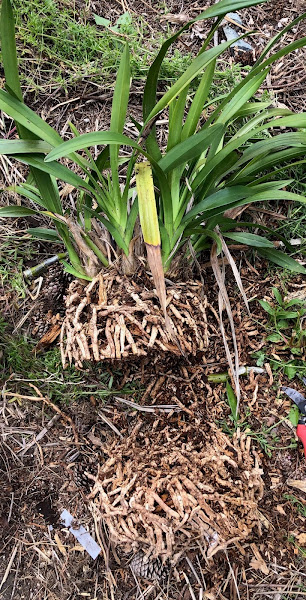This is a beautiful yellow Cymbidium orchid, that has rebloomed for several winters. It did not during the most recent winter. I imagine that was due to overcrowding, but also maybe leaving it sit in the sun with no care during smoky season and other stuff. This is a very tough plant, can dry out like a cactus and it survives. I remembered watching a video a long time ago about dividing and repotting cymbidiums, and decided to divide it like the video I watched. I dont have a link to that.
Here is the plant. The center has died out with all of he growth on the fringes like a mediaeval monk's haircut.
I knocked the plant out of its container. Then I gave it an upside down butch haircut, leaving about 6 inches of roots. Then I used a pruning saw to cut through the clump, goving approximately equal halves. I pulled out any pseudobulbs that looked dead or that I transected, and shook out what old growth medium I could.Then I found another similar size container and potted both halves in arborist fir and arborvitae tree grindings. Then I gave them a good soak, then I watered each with 1/4 strength Miracle Gro for Tomatoes. These went to my orchid summer home, under a large fir tree with mainly eastern and southern exposures. I Will water them and fertilize throuhg the summer. I think they will probably grow, given past experience.


























